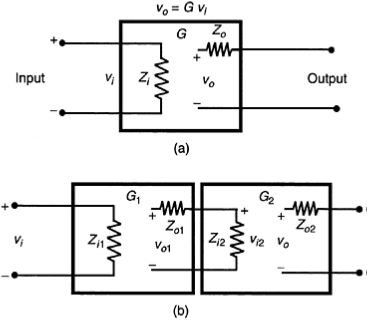SKEDSOFT
Cascade Connection of Devices
Consider a standard two-port electrical device. The output impedance Zo of such a device is defined as the ratio of the open-circuit (i.e., no-load) voltage at the output port to the short-circuit current at the output port.
Open-circuit voltage at output is the output voltage present when there is no current flowing at the output port. This is the case if the output port is not connected to a load (impedance). As soon as a load is connected at the output of the device, a current will flow through it, and the output voltage will drop to a value less than that of the open circuit voltage.
To measure the open-circuit voltage, the rated input voltage is applied at the input port and maintained constant, and the output voltage is measured using a voltmeter that has a very high (input) impedance.
To measure the short-circuit current, a very low-impedance ammeter is connected at the output port.
The input impedance Zi is defined as the ratio of the rated input voltage to the corresponding current through the input terminals while the output terminals are maintained as an open circuit.
Note that these definitions are associated with electrical devices.
A generalization is possible by interpreting voltage and velocity as across variables and current and force as through variables.
Then mechanical mobility should be used in place of electrical impedance, in the associated analysis.
Using these definitions, input impedance Zi and output impedance Zo can be represented schematically as in Figure (a). Note that uo is the open-circuit output voltage.
